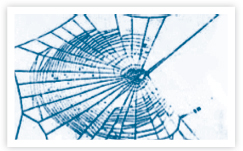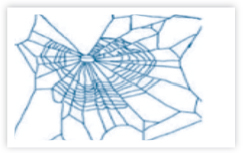ANIMALS UNDER
THE INFLUENCE
Drugs—they’re not just for people anymore.
STONED SHEEP
Nellie Budd had a farm, and on that farm she had some sheep, and those sheep got really high one day in 2014 after they ate seven large bags of marijuana (yes sir, yes sir, seven bags full). Budd had no idea how the buds ended up on her farm; the police suspect that a dealer stashed them in what probably seemed like a good hiding place under a hedgerow. Budd’s sheep were later seen “stumbling on their feet,” as she described it, adding, “they probably had the munchies.” Estimated street value of the flock’s supper: $5,000. (Budd says they suffered no lasting effects.)
MAGIC MUSSELS
In 2018 the Washington Department of Fish and Wildlife tested mussels and other filter-feeders in Puget Sound for controlled substances. Result: they tested positive for oxycodone. How’d it get there? Trace amounts of the pain-relieving opioids ended up at wastewater treatment plants, which are unable to filter out all the drugs. In the past, this wasn’t a huge problem, but the opioid epidemic of the 2010s saw a dramatic spike in the amount of drugs that have been making their way into waterways. And not only oxycodone. “We found antibiotics, we found antidepressants, chemotherapy drugs, and heart medications,” said project biologist Jennifer Lanksbury.
ZONED-OUT ZEBRAFISH
In an effort to better understand the science of addiction, researchers at University of Utah Health say they’ve “devised a system that allowed zebrafish, a small tropical fish, to self-administer doses of hydrocodone, an opioid commonly prescribed to people for pain.” Zebrafish, it turns out, “share similar biological pathways [with people] that lead to addiction.” So it shouldn’t be surprising that the results were very…humanlike: Within a few days, the zebrafish were increasing their drug intake, even when doing so meant putting themselves at risk. (The researchers placed the mechanism that delivers the drug into shallower and shallower water.) After a couple of days off the drugs, the zebrafish displayed typical signs of withdrawal, most notably increased anxiety. Lead researcher Randall T. Peterson called the discovery “exciting,” in that it could provide a “useful and powerful model” to follow when treating humans for addiction.

If you ever see a face in an inanimate object, that’s called pareidolia.
As if octopuses weren’t weird enough already, it appears that they really dig “rolling” on ecstasy. The discovery came about during a 2018 study of the antisocial behavior of octopuses, which only cohabitate while mating—otherwise they kill each other. But not on MDMA, the drug also known as ecstasy. Although the brains of humans and octopuses have little in common, they have nearly identical genes “for a protein that binds the signaling molecule serotonin to brain cells,” according to NPR. “This protein is also the target of MDMA.” That’s why scientists decided to give ecstasy to the invertebrates. The first dosage was probably a bit too much: “They looked like they were freaked out,” said lead reseacher Gul Dolen of Johns Hopkins University. “They would sit in the corner of the tank and stare at everything.” So after a few tweaks, the scientists found the right dose, and the otherwise solitary animals not only preferred to be around each other, but they actually “hugged”—as in, they wrapped their tentacles around each other and gently stroked each other.
BOOZY BIRDS
Have you noticed an increase in the number of birds flying into your windows? Is it October? Do you live in Gilbert, Minnesota? If you answered yes to these questions, there’s a perfectly logical explanation for it: the birds are drunk. It happens every October, and 2018 was such a bad year that the Gilbert Police Department issued a statement telling people not to panic. The odd behavior, they warned, would last only while there were still berries on bushes. An early frost caused the berries to ferment before most of the birds flew south for the winter, so the birds got drunk and started flying into people’s windows and cars. The public was assured that “there is no need to call law enforcement about these birds as they should sober up within a short period of time.” The cops concluded their post with the following list of bird behaviors that, if you see, you should definitely call them:
•Heckle and Jeckle walking around being boisterous or playing practical jokes
•Woodstock pushing Snoopy off the doghouse for no apparent reason
•The Roadrunner jumping in and out of traffic on Main Street
•Big Bird operating a motor vehicle in an unsafe manner
•Angry Birds laughing and giggling uncontrollably and appearing to be happy
•Tweety acting as if he is 10 feet tall and getting in confrontations with cats
•Any other birds after midnight with Taco Bell items

The skyscraper at 20 Fenchurch in London reflects sunlight to the ground so intensely that it has melted parts of cars that park in front of it.
“The more toxic the chemical, the more deformed a web looks in comparison with a normal web.” That’s the conclusion of a 1995 NASA study in which scientists gave common spiders doses of caffeine, amphetamines, marijuana, and chloral hydrate. They were re-creating a 1948 study conducted by German zoologist H. M. Peters and pharmacologist Peter Witt. Peters simply wanted the orb weavers to spin their webs at a time other than pre-dawn (so he didn’t have to wake up so early to study them). Witt fed various spiders sugar water laced with “caffeine, mescaline, amphetamine, LSD, or strychnine” in the hopes of throwing off their sense of time. It threw off a lot more than that, as evidenced in their wonky webs: some got big, some got small, some didn’t do anything at all. (Interestingly, the caffeinated spider spun the weirdest web.) So what have all these doped-up arachnids taught us about drugs over the years? Not much, according to a 2015 article in Vice: “It turns out, giving a spider drugs is just one possible interruption to a process within a brain that is, like all nonhuman brains, alien to us. We can’t plausibly look at the handiwork of that arachnid and assume we know anything more about the drug that made it that way.”
Still, it’s fun to look at their drug-induced handiwork. Here are what the webs from the 1995 NASA study look like:

This spider was given mescaline.

This spider was high on marijuana.

This spider was tripping on LSD.

This spider was crazed by caffeine.

About a third of Americans have their fingerprints on file with law enforcement.